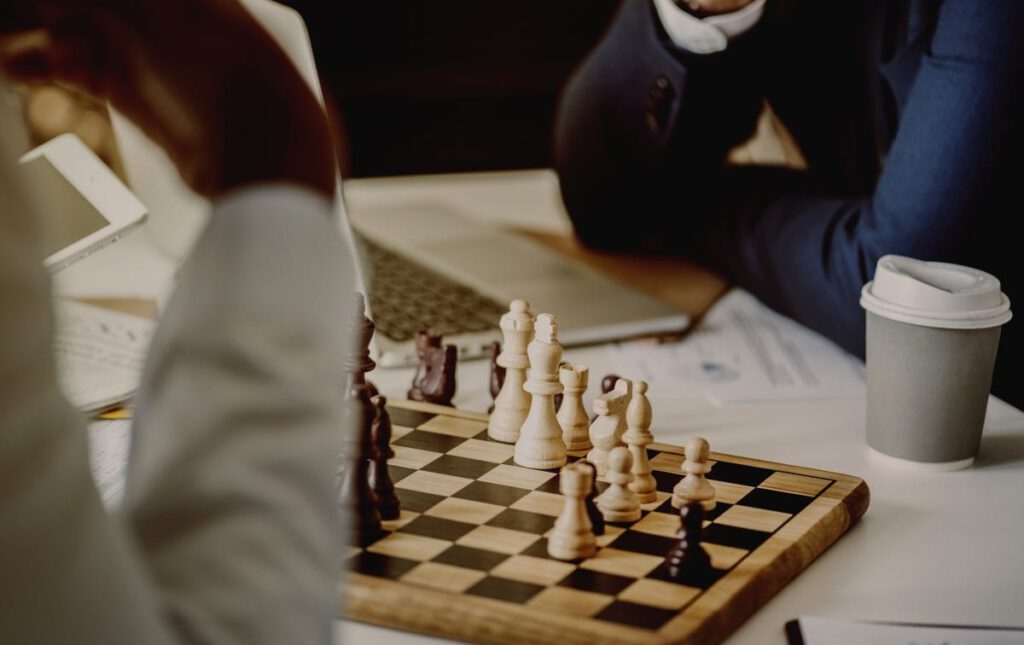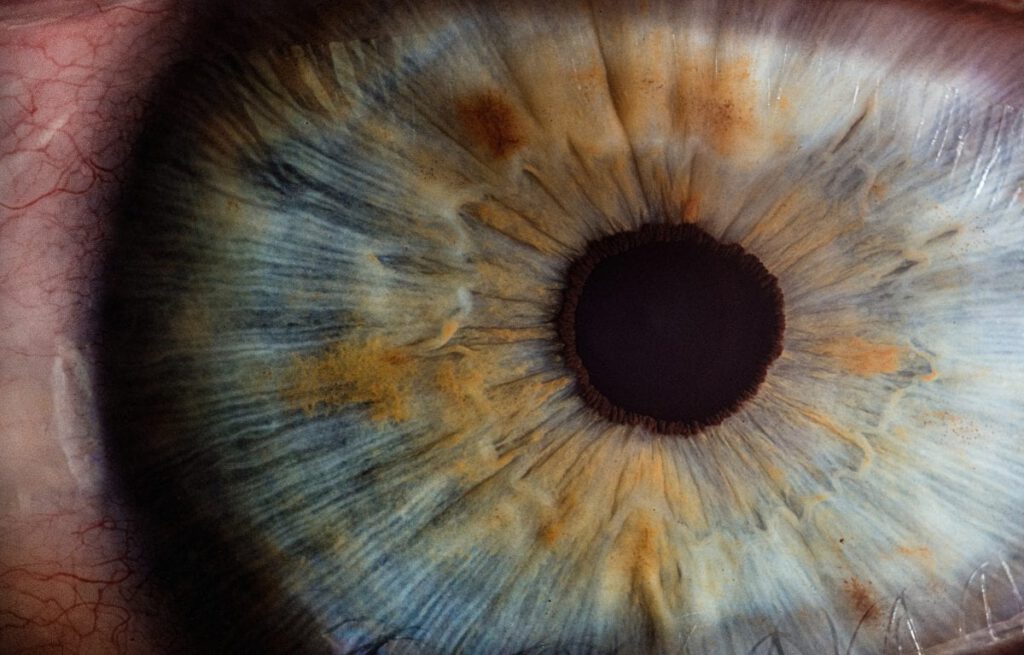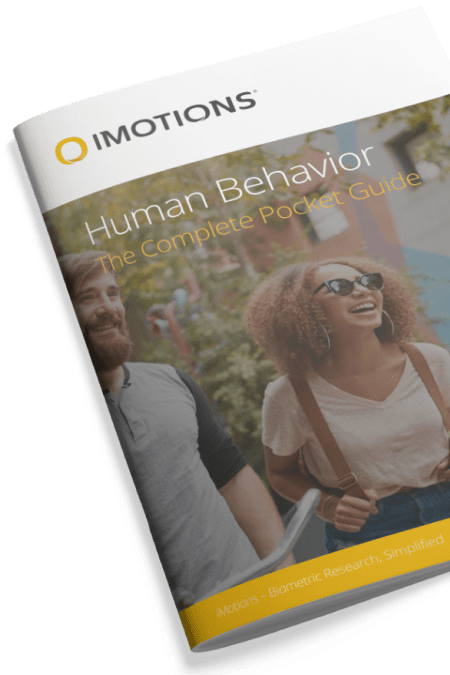Table of Contents
As humans, we are always making choices. Our days are shaped by decisions both big and small as we make our way through the world (“what should I wear today?”, “what should I do with my life?”). Understanding this decision-making process – how we end up committing to a certain form of action – is one of the central tasks of human behavior research.
With most decisions in the real world, there are a huge number of possible actions that can be taken and almost as many extraneous factors that can influence what choice we make. It has often been difficult for psychologists and human behavior researchers to investigate our decision-making in a systematic way for this very reason. This is where Game Theory comes in.
Below, we will explore what Game Theory is, examples of its use in human behavior experiments, and how biosensors (eye tracking, GSR, facial expression analysis, and EEG in particular) can help investigate the decision-making process in detail.
What is Game Theory?
Defined as “the study of mathematical models of conflict and cooperation between intelligent rational decision-makers” [1], it is essentially a field of study that looks at the way in which people respond to limited choices, that have a limited set of outcomes that can be either good, bad, or neutral.
While ideas relating to Game Theory have been proposed and discussed for a long time, it was only in 1928 with John von Neumann’s book “Theory of Games and Economic Behavior” that the field was formalized. Ideas were developed further by mathematicians such as John Nash, and Robert Axelrod.
While Game Theory is used and explored across a variety of fields (not least within economics and philosophy), the application of this approach can be particularly interesting when explored in the context of human behavior and psychology.
By restricting the choices that people can make, it becomes possible to investigate the process of decision-making in a systematic way. The ways in which a person chooses a path that leads them to a predefined outcome can then be explored in detail. But what do these choices look like?
Examples of Game Theory Experiments
One of the earliest, and most widely discussed examples is the Prisoner’s Dilemma. Within this scenario, two prisoners are confronted by detectives with the possibility to either betray their fellow prisoner, or stay silent. As there isn’t enough evidence without a betrayal from either (or both) to convict them of the main charge, they will receive only one year in prison if they both stay silent, but three years if they are betrayed. If they both betray each other, they will both spend two years in prison.
The following explains the options:
- If Prisoner 1 and Prisoner 2 both betray each other, both of them will spend two years in prison
- If Prisoner 1 betrays Prisoner 2, but Prisoner 2 says nothing, Prisoner 1 will be set free and Prisoner 2 will spend three years in prison (and the other way around)
- If Prisoner 1 and Prisoner 2 both say nothing, both of them will serve only one year in prison
This can also be explained through the following:
| Prisoner 1 says nothing | Prisoner 1 betrays | |
| Prisoner 2 says nothing | 1 year each | Prisoner 2 gets 3 years, Prisoner 1 is set free |
| Prisoner 2 betrays | Prisoner 1 gets 3 years, Prisoner 2 is set free | 2 years each |

There are different ways of presenting the Prisoner’s dilemma to make it more tractable to the real world, providing participants with both a more ecologically valid scenario, and a limited set of choices that can be explored. The above example is particularly interesting for researchers as the optimal choice often isn’t taken.
From the point of view of pure self-interest, participants should choose to betray their fellow prisoner – they then have the possibility to be set free, or at least have a reduced sentence of two years, if their fellow prisoner betrays them while they do not.
However, encouragingly for humanity – people usually behave cooperatively [2] and say nothing to betray each other. To make matters more interesting, and more complex, the scenario can be repeated multiple times to see how each participant behaves if past behavior can be taken into account. Being betrayed by a fellow prisoner will of course mean that the participant is less likely to trust them in the future, which can mean betrayals are likely to be returned, in a “tit for tat” manner.
Understanding how, and why, this process takes place is a central topic for human behavior researchers.
The Game of Chicken
Another classic example is that of “chicken” (otherwise known as hawk-dove game, or snowdrift game [3]), which centers around two “players” driving in separate cars towards each other at speed – one (or both of them) can swerve to avoid a crash but then will be the “chicken”. If neither swerves, they will crash (and, well, die).
As before, the outcomes can be listed in a table.
| Car 2 keeps driving | |
| Car 1 keeps driving | Both crash |
| Car 1 swerves | Car 1 loses |
The logic of this game became particularly famous when applied to nuclear war – two countries threaten each other with nuclear bombs, heading towards mutual destruction unless one of them “swerves” and de-escalates the situation.
Needless to say, the games can become much more complex than the two presented above, with each modification offering a different insight into how humans arrive at decisions, and what those decisions look like.
Some other examples (of which there are many more) are listed below:
- The stag hunt / assurance game
- Centipede game
- Dollar auction
- War of Attrition
- Diner’s dilemma
- Infinite chess
- Bargaining problem
- Volunteer’s dilemma
- Ultimatum game
- Dictator game

Game Theory and Human Behavior Research
A variety of research has shown how the decision making process within games can be delineated and understood in greater detail thanks to devices like eye trackers, GSR sensors, facial expression analysis, and EEG.
One example comes from the Ultimatum game [4]. The Ultimatum game involves an amount of money that one player can split with another player in the proportion of their choosing – the other player can then accept (and the money is divided accordingly between them), or reject (and neither receives any money).
The rational choice for the receiver would be to always accept the money, as that is always better than no money, but unsurprisingly, humans operate in different ways.

Hewig and others (2011), used both EEG and GSR within the Ultimatum game to assess how emotions impact decision making. They built upon research showing how GSR responses are associated with aversive stimuli [5].
By examining the GSR responses (that were previously linked to aversive stimuli), they also found these responses were associated with less “rational” behavior, demonstrating how our decision making abilities can be impacted by our emotions, and how to track that happening.
As the cooperation of multiple players is often central to the aforementioned games, researchers have also looked at the EEG activity of several participants at the same time [6]. Babiloni and others (2007) used this approach (called EEG hyperscanning) to investigate the Prisoner’s dilemma, finding an association with cortical activity (in the anterior cingulate – associated with emotional control) and the likelihood of betrayal.
This showed one way to peek into the processes that control how we make an emotionally-loaded decision.
Other examples have also shown the importance of emotions in directing future decision making within a game environment [7, 8]. As facial expression analysis can provide information about the emotional state of participants, this method could elucidate how such changes could impact which decision is, or isn’t taken.
Other studies have looked at how measurements of participants’ gazes and pupillometry can be informative for understanding potential deception in a game theory decision making task [9]. This has been applied further within a game context, helping understand how one player’s perception of the other player can affect decision making outcomes [10].

A recent study has also shown how eye tracking glasses can provide information about the impacts of socialization on decision making within a Prisoner’s dilemma task. The researchers showed how increased attention to non-cooperative choices was associated with such outcomes (i.e. choosing to betray, rather than stay silent) [11].
Following the impact of decision making as a result of social processes with eye tracking shows how even our non-conscious behavior can be significantly altered, suggesting a way to predict future actions.
Software such as z-Tree is often used to develop and carry out such Game Theory experiments, a tool that can be integrated into iMotions with the use of the API, allowing investigations with multiple sensors to be readily carried out. This allows a straightforward path to carry out experiments such as those above – using biosensors to better understand decision making.
All of the above studies have shown how biosensors can offer insights for Game Theory experiments, and how they can help predict our actions within the predefined routes of these games. The more that this research is carried out, the closer we can get to understanding one of the biggest questions within human behavior research – how we make decisions.
Free 52-page Human Behavior Guide
For Beginners and Intermediates
- Get accessible and comprehensive walkthrough
- Valuable human behavior research insight
- Learn how to take your research to the next level

References
[1] Roger B. Myerson. Game theory: analysis of conflict. Harvard University Press, 1992.
[2] Fehr, Ernst, and Urs Fischbacher. (2003). The Nature of Human Altruism. Nature, 425(6960): 785–91.
[3] Sugden, R. The Economics of Rights, Cooperation and Welfare 2 edition, page 132. Palgrave Macmillan, 2005.
[4] Hewig J., Kretschmer N., Trippe R. H., Hecht H., Coles M. G. H., Holroyd C. B., et al. . (2011). Why humans deviate from rational choice. Psychophysiology 48, 507–514. 10.1111/j.1469-8986.2010.01081.x
[5] Hajcak G., McDonald N., Simons R. F. (2004). Error-related psychophysiology and negative affect. Brain Cognition. 56 189–197. 10.1016/j.bandc.2003.11.001.
[6] Babiloni F., Astolfi L., Cincotti F., Mattia D., Tocci A., Tarantino A., et al. (2007). “Engineering in medicine and biology society, EMBS 2007,” Proceedings of the 29th Annual International Conference of the IEEE Paris: 4953–4956.
[7] Pillutla MM, Murnighan JK. 1996. Unfairness, anger, and spite: emotional rejections of ultimatum offers. Organ. Behav. Hum. Decis. Process. 68:208–24
[8] Harle K. M., Sanfey A. G. (2007). Incidental sadness biases social economic decisions in the ultimatum game. Emotion 7 876–881. 10.1037/1528-3542.7.4.876
[9] Wang, J.T., Spezio, M., Camerer, C.F. (2010). Pinocchio’s pupil: using eyetracking and pupil dilation to understand truth telling and deception in sender-receiver games. American Economic Review, 100(3), 984–1007.
[10] Meijering B. van Rijn H. Taatgen N. A. Verbrugge R. (2012). What eye movements can tell about theory of mind in a strategic game. Plos One, 7 (9), e45961.
[11] Peshkovskaya A.G., Babkina T.S., Myagkov M.G., Kulikov I.A., Ekshova K.V., Harriff K.: The socialization effect on decision making in the Prisoner’s Dilemma game: An eyetracking study. Plos One, 12(4): e0175492, https://doi.org/10.1371/journal.pone.0175492 (2017)











